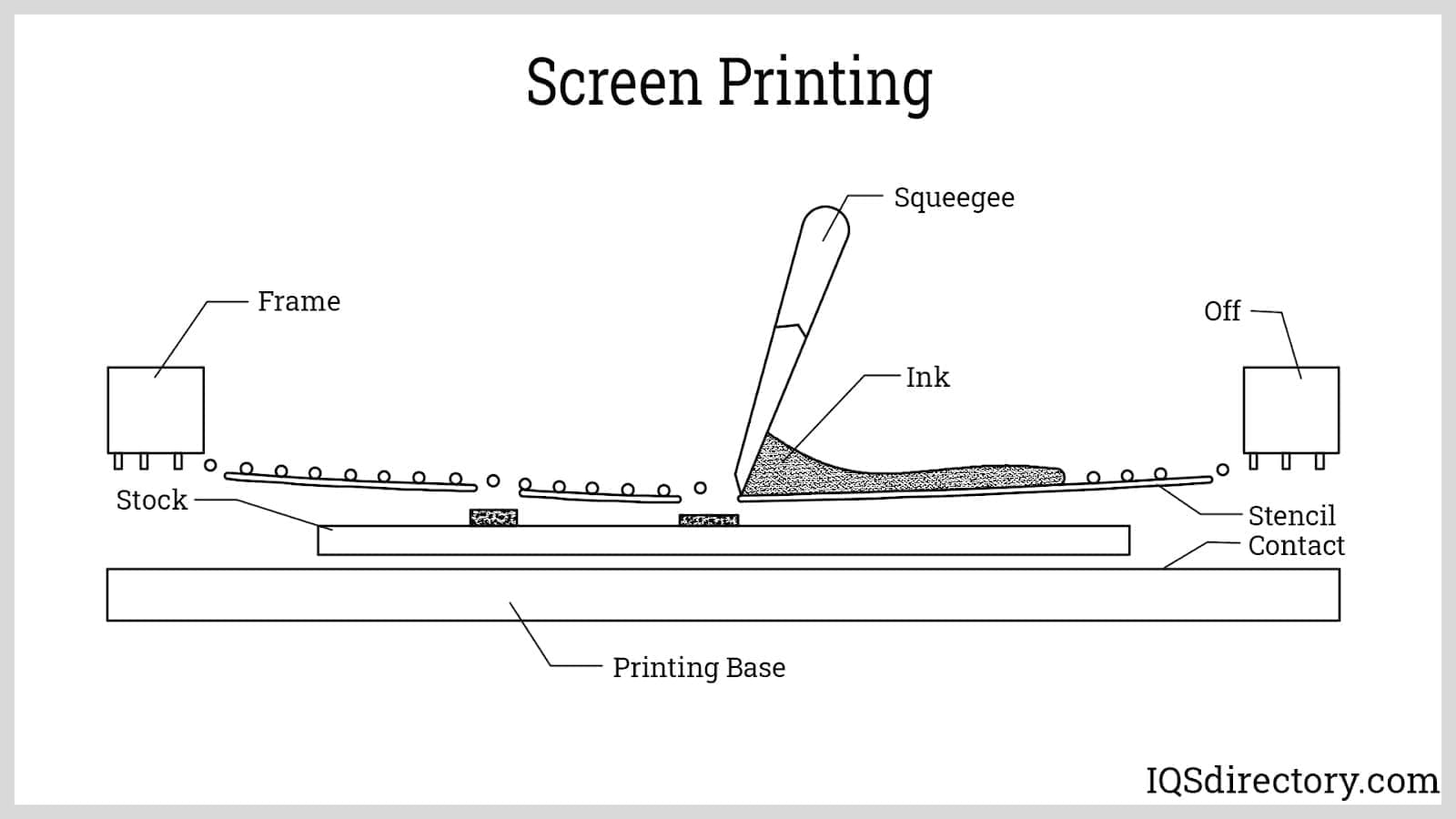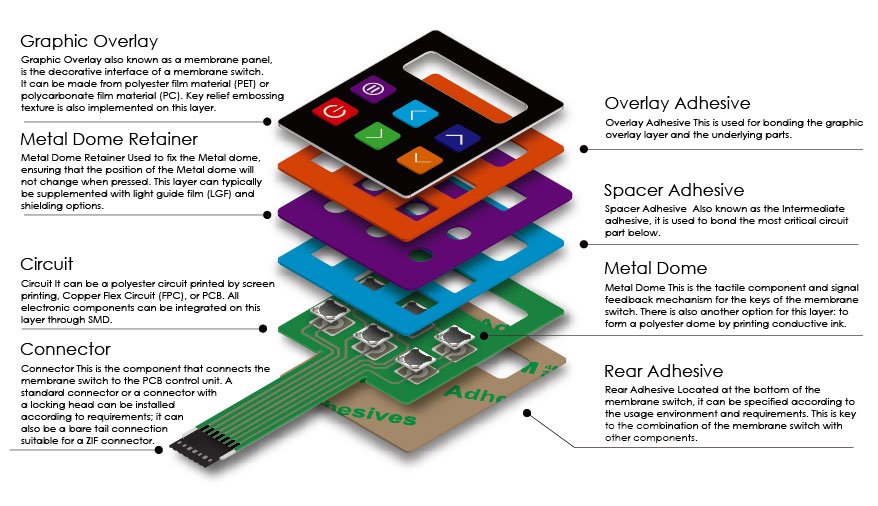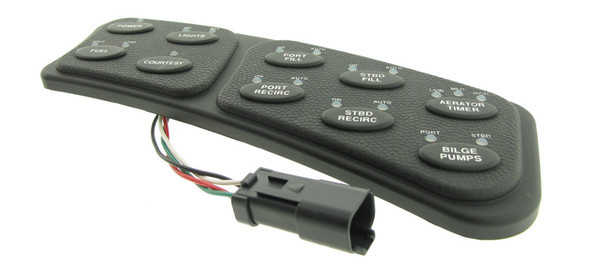The Manufacturing Refine Behind Membrane Switch: What You Required to Know
The production process behind membrane layer switches over combines cautious style, material selection, and quality assurance. It starts with recognizing the details of membrane button style and progresses with various phases, consisting of material options and printing techniques. Each stage plays a crucial duty in making sure capability and sturdiness. The complexities of layer building and the rigorous screening criteria might expose insights that are not right away evident. What exists past these foundational aspects?
Understanding Membrane Switch Over Design
Although membrane layer switches might show up simple initially look, their style includes detailed factors to consider that assure functionality and resilience. The design process starts with an extensive understanding of user needs, including the interface's intended application and ecological aspects. Comfort designs is a crucial element, as the layout has to assist in convenience of use while making sure that responsive feedback fulfills individual expectations.Moreover, the layering of elements, such as visuals overlays, glue layers, and conductive traces, need to be precisely engineered. membrane switch. This layered arrangement not only affects the button's responsiveness yet likewise influences its longevity. Interest is provided to the securing techniques utilized to secure versus wetness and dust, which might jeopardize performance. Additionally, layout considerations encompass visual appeals, where color design and aesthetic clarity improve user experience. Ultimately, the design of membrane layer switches balances capability, customer experience, and resilience, making sure that they meet the demands of various applications successfully
Materials Utilized in Membrane Layer Change Manufacturing
When selecting materials for membrane layer button production, it is crucial to contemplate both efficiency and resilience. The primary materials consist of polyester and polycarbonate movies, which offer versatility and strength. These movies are typically covered with adhesive to ensure appropriate bonding to substratums. Conductive inks, usually made up of silver or carbon, are crucial for developing electrical connections within the button, enabling trusted operation.Additionally, a protective layer, such as a hard layer, is frequently used to enhance scratch resistance and durability. The selection of backing material, such as acrylic or foam, can substantially impact the button's responsive feeling and general individual experience. Numerous environmental variables, consisting of temperature and moisture, need to guide product option to ensure peak performance in certain applications. Inevitably, the ideal combination of products adds to the membrane button's functionality and life-span, making educated options important for makers.
The Printing Refine: Creating Graphics and Text
The printing process in membrane button manufacturing plays a considerable duty in generating top notch graphics and text. Different visuals layout techniques are utilized to assure aesthetic allure and capability, while careful ink selection approaches are necessary for toughness and performance. Comprehending these aspects is fundamental for achieving finest lead to membrane switch style.
Graphic Style Techniques
Graphic design strategies play an important role in the printing process of membrane layer switches, as they specify exactly how graphics and text will eventually appear on the final item. Effective graphic layout includes the critical use shades, designs, and typefaces to boost readability and aesthetic charm. Designers commonly use vector graphics for scalability, making sure that pictures stay sharp at numerous sizes. Additionally, attention to comparison and placement is important, as it affects user communication and aesthetic high quality. The incorporation of branding elements, such as logo designs, have to be taken care of with treatment to keep brand stability. Overall, thoughtful visuals design techniques contribute considerably to the performance and attractiveness of membrane buttons, influencing customer experience and product efficiency.
Ink Choice Methods
Choosing the proper ink is vital for achieving the desired visual quality and toughness in membrane layer switch production. Various ink types are made use of, consisting of solvent-based, water-based, and UV-curable inks. Each type provides distinctive qualities, such as resistance, flexibility, and bond to environmental aspects. Solvent-based inks are frequently preferred for their sturdiness and lively colors, while water-based inks are more eco pleasant however might have constraints in adhesion. UV-curable inks supply rapid healing and robust efficiency. Additionally, shade matching techniques assure that the chosen inks align with design specs. Ultimately, the choice of ink must take into consideration aspects such as application approach, substratum compatibility, and end-use requirements to accomplish exceptional outcomes in membrane button graphics and message.
Layer Construction and Assembly

Product Selection Process
A cautious choice of materials is necessary in the manufacturing process of membrane layer switches, as it directly affects functionality and durability. The primary materials made use of include polyester, polycarbonate, and various conductive inks. Polyester is commonly preferred for its exceptional resistance to chemicals and abrasion, making it appropriate for severe settings. Polycarbonate, on the various other hand, provides exceptional clearness and influence resistance, which is advantageous for applications needing presence and toughness. Conductive inks, commonly composed of silver or carbon, are crucial for creating trusted electric paths. Furthermore, the option of glue products influences the general stability of the switch - membrane switch. Assessing elements such as environmental exposure, tactile responses, and aesthetic needs guides manufacturers in selecting the very best materials for their particular applications
Layer Adhesion Methods
Sticking layers in membrane layer switch building is a crucial procedure that ensures performance and durability. Various attachment methods are utilized to safeguard ideal bonding in between layers, which normally consist of making use of adhesives, warm, and stress. Pressure-sensitive adhesives (PSAs) are commonly made use of for their convenience of application and prompt bonding capacities. Furthermore, thermal like this bonding strategies can be used, where heat is made use of to turn on glue homes, safeguarding a strong bond. The option of bond method mainly depends upon the materials included and the details application demands of the membrane layer switch. Appropriate alignment and consistent application of adhesives are crucial to avoid defects, securing the switch runs effectively throughout its intended life-span.
Top Quality Control Measures
Assuring quality control during the layer building and assembly of membrane buttons is vital for preserving performance and reliability. This process generally entails numerous crucial measures, consisting of extensive examinations at each phase of manufacturing. Makers use innovative screening methods, such as peel examinations and attachment analyses, to confirm the stability of layer bonds. In addition, aesthetic inspections are performed to identify any kind of problems in printing or product incongruities. Ecological conditions, such as temperature level and moisture, are thoroughly checked to assure suitable curing and attachment. In addition, regular calibration of equipment assists maintain exact manufacturing requirements. By carrying out these quality assurance measures, suppliers can greatly reduce the threat of product failing, assuring that the final membrane layer switches over fulfill the needed requirements and consumer assumptions.
Evaluating and Quality Assurance Steps

Advancements in Membrane Layer Switch Over Innovation
As improvements in technology remain to advance, membrane layer buttons are profiting from click ingenious developments that improve their functionality and customer experience. One noteworthy advancement is the integration of capacitive touch innovation, which allows for more user-friendly and responsive customer interfaces. This shift not just improves appearances however additionally minimizes mechanical damage, expanding the lifespan of the switches.Additionally, improvements in graphic overlay materials have resulted in boosted durability and resistance to ecological factors such as wetness and UV light. These products currently provide boosted clearness and illumination, more boosting the aesthetic appeal.Furthermore, the consolidation of wise modern technology is changing membrane switches into interactive control board, allowing connection with IoT tools. This connectivity promotes a smooth customer experience, leading the way for applications in different sectors, from health care to consumer electronics. Jointly, these innovations position membrane layer changes as essential elements in contemporary tool design.
Regularly Asked Concerns
Exactly how Lengthy Does the Membrane Layer Change Manufacturing Refine Take?
The duration of the membrane button production process can differ substantially. Factors such as complexity, materials used, and production quantity influence timelines, with regular manufacturing ranging from a couple of days to several weeks for conclusion.
What Are the Typical Applications for Membrane Layer Buttons?
Membrane layer switches are commonly utilized in various sectors, consisting of automotive controls, family home appliances, clinical tools, and consumer electronics (membrane switch). Their convenience and resilience make them suitable for applications calling for user-friendly user interfaces and trustworthy performance in varied environments
Can Membrane Layer Switches Over Be Custom-made for Specific Needs?

What Is the Lifespan of a Common Membrane Switch?
The life expectancy of a normal membrane button differs, however normally, it varies from 1 to 5 million cycles. Factors such as usage, atmosphere, and material high quality substantially influence longevity and general efficiency over time.

Are Membrane Switches Over Environmentally Friendly?
The ecological friendliness of membrane layer changes differs. Some materials used might not be recyclable, while others can be eco-friendly. The overall impact relies on manufacturing products and practices, demanding cautious factor to consider throughout choice and disposal. The production process behind membrane layer switches over combines cautious layout, material choice, and quality control. It begins with comprehending the ins and outs of membrane layer button style and advances with various phases, consisting of product options and printing techniques. When selecting materials for membrane button manufacturing, it is important to contemplate both efficiency and sturdiness. A cautious selection of products is crucial in the manufacturing procedure of membrane layer buttons, as it directly affects performance and durability. The choice of adhesion approach largely depends on the materials included and the specific application requirements of the membrane switch.